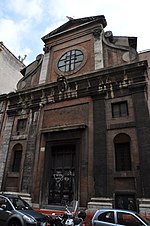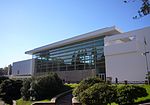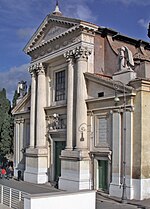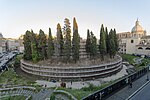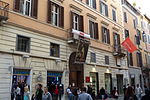Accademia di Belle Arti di Roma
1870 establishments in ItalyAccademia di Belle Arti di RomaArt schools in ItalyCulture in RomeEducational institutions established in 1870 ... and 7 more
Educational institutions established in the 16th centuryEurope university stubsItalian school stubsRome R. IV Campo MarzioSchools in RomeUse British English from July 2013Use list-defined references from July 2013

The Accademia di Belle Arti di Roma is a public tertiary academy of art in Rome, Italy. It was founded in the sixteenth century, but the present institution dates from the time of the unification of Italy and the capture of Rome by the Kingdom of Italy in 1870.: 86
Excerpt from the Wikipedia article Accademia di Belle Arti di Roma (License: CC BY-SA 3.0, Authors, Images).Accademia di Belle Arti di Roma
Piazza del Ferro di Cavallo, Rome Municipio Roma I
Geographical coordinates (GPS) Address Nearby Places Show on map
Geographical coordinates (GPS)
| Latitude | Longitude |
|---|---|
| N 41.9075 ° | E 12.4756 ° |
Address
Piazza del Ferro di Cavallo
Piazza del Ferro di Cavallo
Rome, Municipio Roma I
Lazio, Italy
Open on Google Maps


